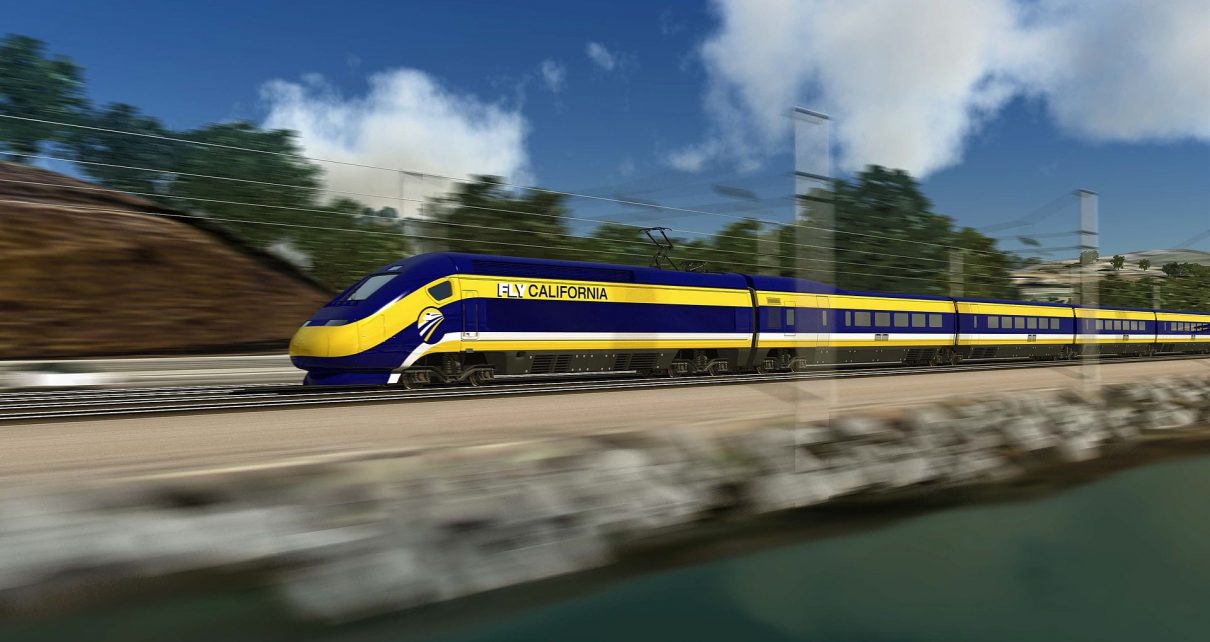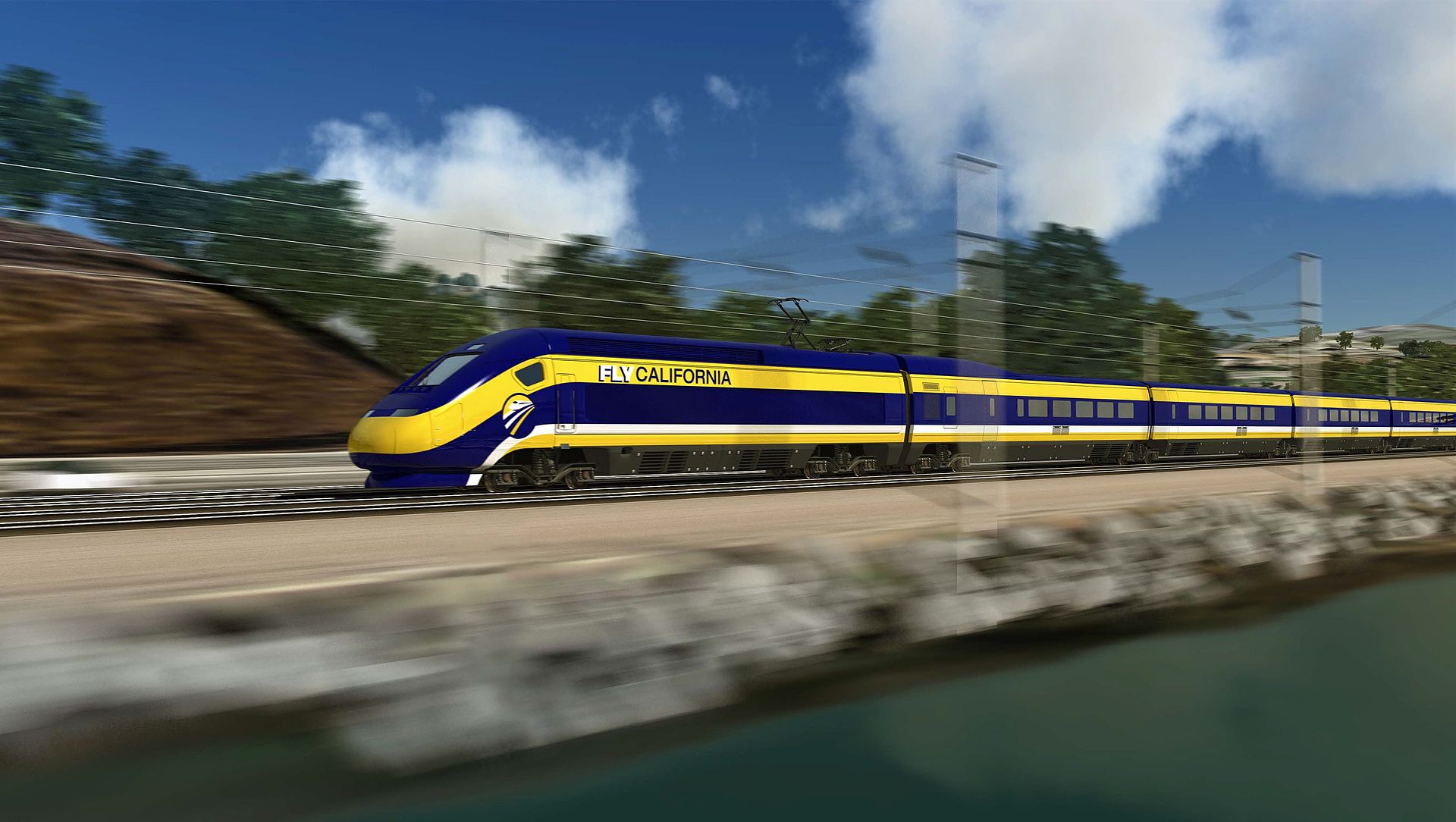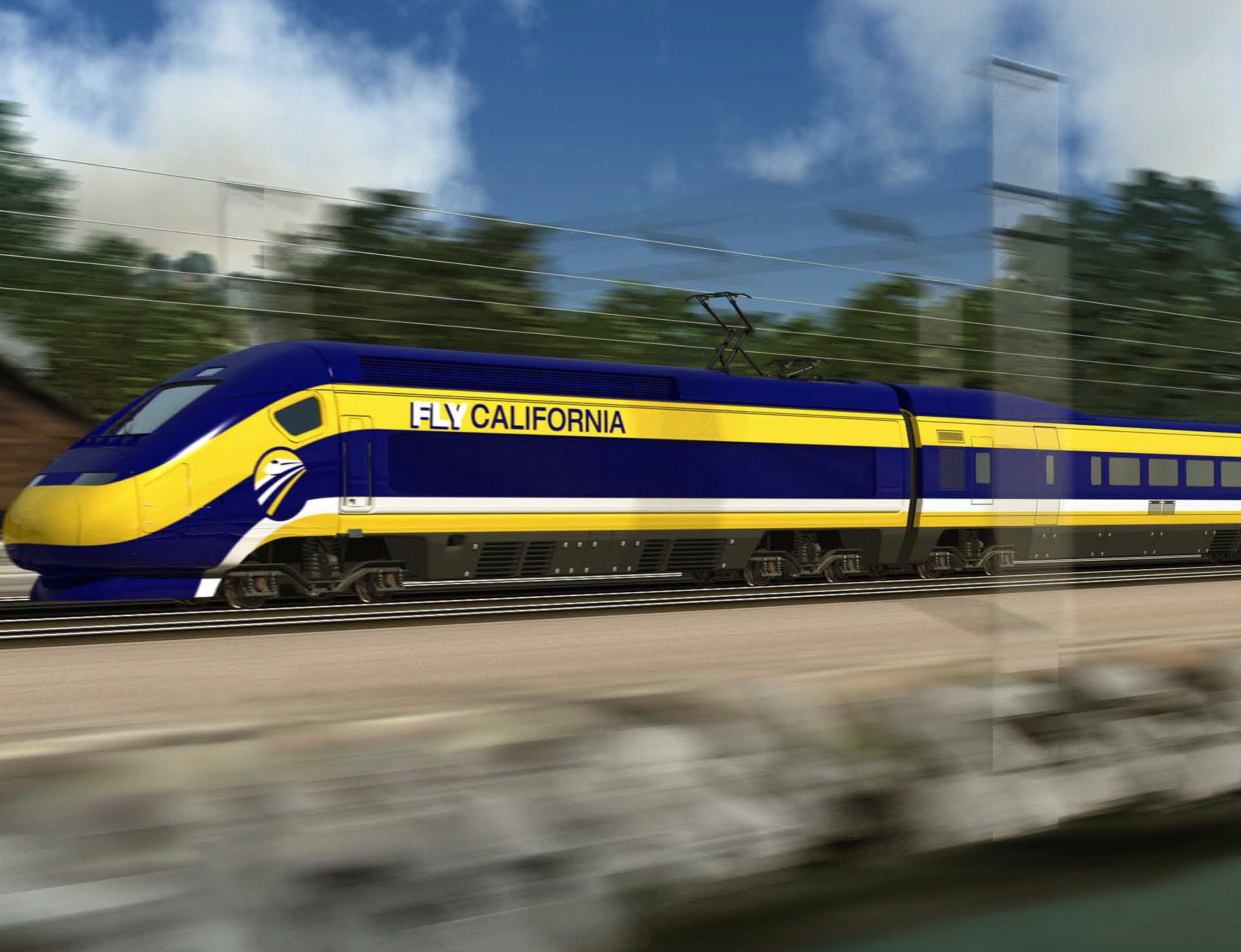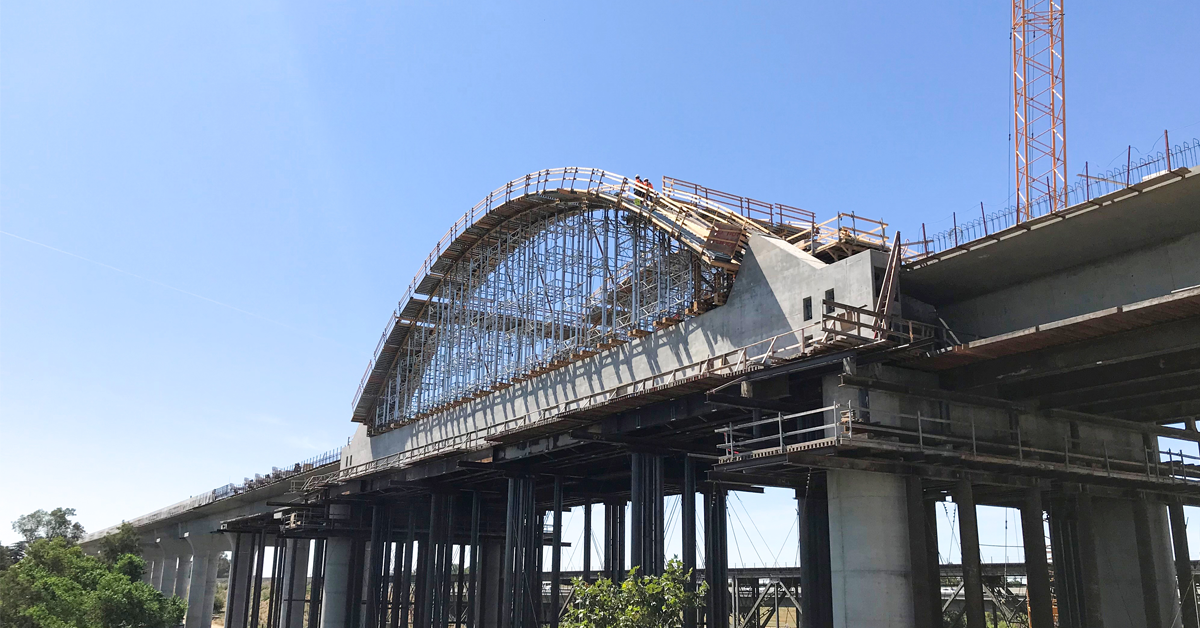
High Speed Rail train, artists rendering. (Photo: CHSRA.ca.gov)
California High Speed Rail Authority Faces Another Two Year Delay in Construction
Dragados’ change orders bumped up their cost estimate from $1.3 billion in 2019 to the current $2.1 billion
By Evan Symon, March 30, 2021 7:13 am
A released letter from Spanish construction firm Dragados Monday found that the opening of the California high speed rail stretch between Bakersfield and Merced was likely to be delayed by another two years.
In a letter obtained by the Los Angeles Times, Dragados notified the California High-Speed Rail Authority of changing orders due to a lack of land to build on due to the California High-Speed Rail Authority not buying parcels fast enough. The firm also complained of a stop and go construction schedule to to land buying delays stopping progress until a new parcel could be bought.
Due to the cycle of hiring new workers when land becomes available to build on and laying them off when there is a buying delay, Dragados added that the higher risk due to the uncertainty of work among subcontractors and suppliers would be priced into bids.
“Therefore, the impact of providing a schedule which includes incorrect right of way dates will only exacerbate these impacts,” noted Dragados in the letter dated March 9th.
In Kings County alone, a 65-miles stretch of track originally planned to be completed by 2023 was revised for an April 2025 opening due to the slow rate of land acquisition. At the beginning of 2021, 264 more parcels were needed in Kings County. In January only 9 were bought, throwing off construction estimates due to the slow pace. State plans for larger openings later in the decade and into the 2030’s are also likely to be affected, as is the price for the rail network. A shortened route between Merced and Madera, recently jumping up in price from $12.4 billion to $13.8 billion to complete, will likely go up once again with a two year delay.
Dragados also joins the construction firm Tutor Perini in falling behind schedule due to land buying delays, with Tutor Perini’s route in Fresno County and Madera County needing over 500 land parcels to be completed on time.
“The delays are beyond comprehension,” said the Sylmar-based construction firm last year in a letter.
More delays, higher costs
Joe Hedges, the COO of the California High-Speed Rail Authority, downplayed the letter during the weekend, noting that great progress in land acquisition was being made, with half the land parcels being sought by the Authority just needing to be condemned to be bought.
However, there remain many indicators besides the Dragados estimate that indicate recent issues in the high speed rail line. Dragados’ change orders alone have bumped up their cost estimate from $1.3 billion in 2019 to the current $2.1 billion. A botched Madera County bridge last year cost the state valuable resources. Governor Gavin Newsom recently installed a new director of real property for the authority, the fourth in as many years. Another added delay, by of one year for the system, was even announced just last month.
“What California is going through now isn’t unheard of for a new high speed rail line, but it is by far the most expensive and most complex ever built in the Americas,” noted German passenger railroad consultant Horst Bauer to the Globe. “They started with a lowball number and worked on best case scenarios, but of course, unexpected things changed that.
“That’s where a lot of anger is coming from. The skyrocketing costs, the delays, the slow land buying, additional issues caused by COVID-19, local resistance, and more. It’s all stemmed from the state not being up front and being unrealistic. We were supposed to have a high speed train going from Los Angeles to San Francisco by the Olympics for around $40 billion. Now we’ll be lucky to have trains running for a segment of that by then with a new cost between $70 and $100 billion.”
“This new Dragados information reminds me of other big projects that have been great losses of money for decades. A case study we learned in engineering school was the Montreal Olympic stadium that took 3 decades to pay off for over $1 billion. But that is just a stadium. This is an entirely new train system that has had many bad breaks, some self-caused, others no fault of their own.”
“And, if these new cost overruns and delays are any indication, it won’t be getting much better soon.”
More updates about the high speed rail system are expected soon.
Back in 2012, the project budget was reduced to $68 billion from $98.6 billion after criticism of the escalating costs.
- Bill to Require Law Enforcement Disclosure if AI Was Used To Help Write Reports - August 7, 2025
- Gov. Newsom Files FOIA Request To ‘Expose True Cost’ Of L.A. Federal Troop Deployment for Anti-ICE Riots - August 6, 2025
- California Redistricting: How Newsom’s Plan Will Demolish Hard Fought GOP Gains - August 6, 2025





I thought we had pulled the plug on this abject stupidity! Guess not.
Newsom did a head fake on shutting down the high speed rail. He said he was shutting it down but actually EXPANDED the scope of the work.
If in fact this thing is ever completed, at the rate it’s being built it will be obsolete. It’s the Sunk Cost Fallacy in action.
There are possible saves for this mess, but don’t hold your breath. They won’t happen. Too many entrenched special interests in the way.
If things were like California the 60s, when things actually got built with minimum of nonsense, it would have been finished for a fraction of the original budget in three or four years and already running at a profit. In other words, pretty much what SNCF proposed only to have it turned down. (They wanted to run it right up the middle of the I-5.)
Well, that didn’t happen. A shame really. Downtown L.A. to Downtown San Francisco in ~3 hours or less sounds sort of attractive vs the hassles of flying commercial.
Just a thought.
VicB3
Anyone remember the song “Train to Nowhere” by Savoy Brown in the 70’s?